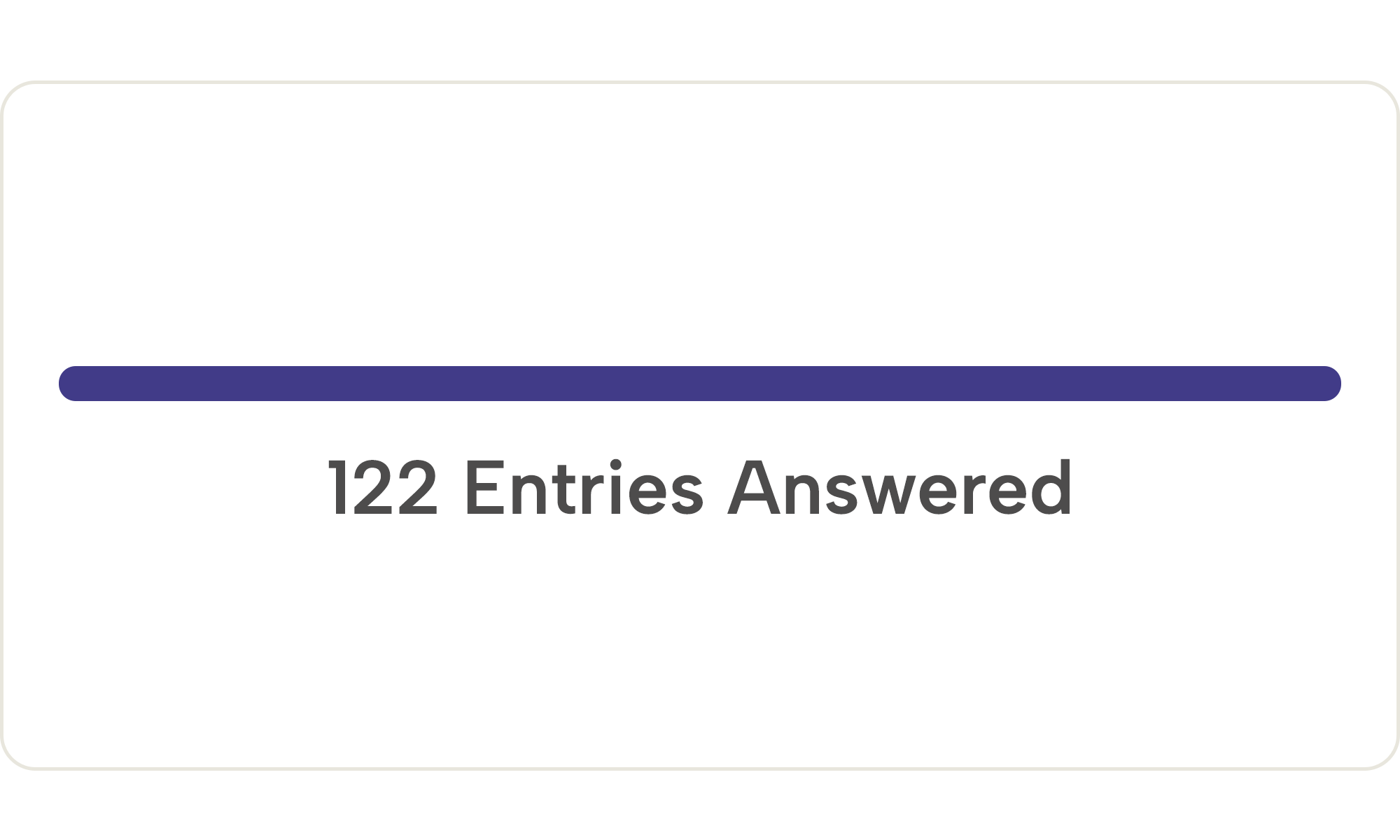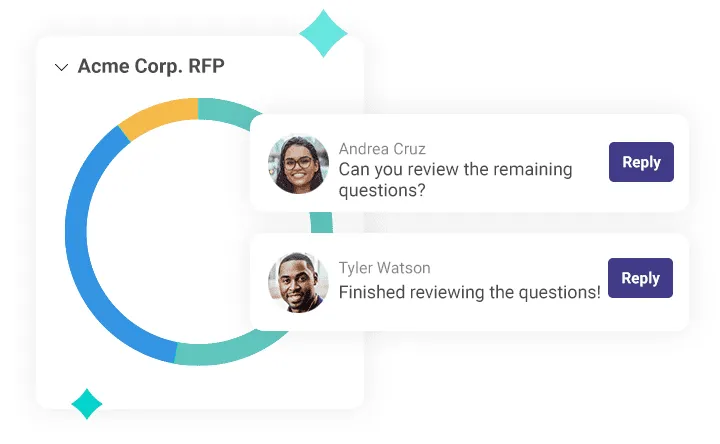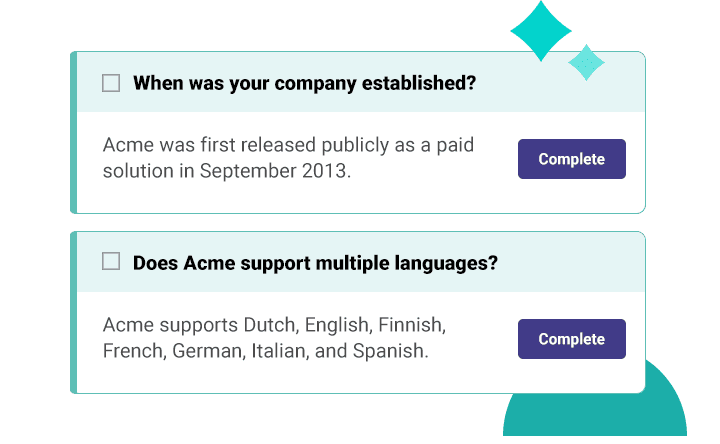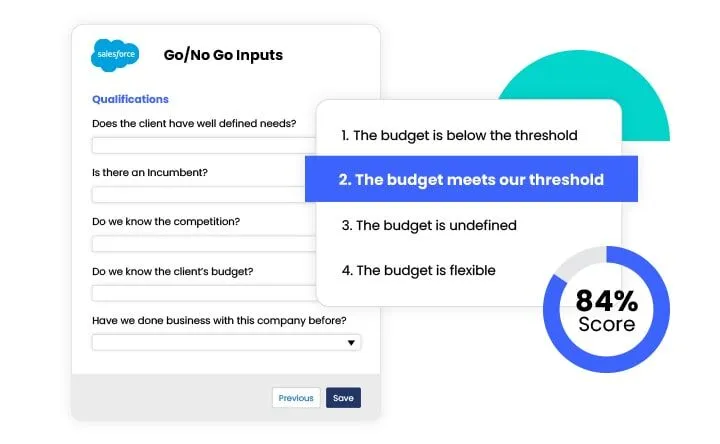RFP Automation Software
Get Answers Faster. Beat Your Deadlines. Win More RFPs.

Trusted by 1,700+ Global Brands
Answer Hundreds of Questions Quickly & Accurately
Get Sales, IT, and Infosec teams answering security questionnaires faster—without sacrificing accuracy—so your organization can get back to selling solutions, securing data, and driving growth (instead of being stuck in spreadsheets).
Always Have Fresh Content
Enjoy having your own searchable RFP answer library that’s streamlined, updated, and accurate.
Make SMEs More Responsive
Assign tasks, build timelines, get approvals, and collaborate on responses so nothing slips through the cracks.
Automate the Busywork
Our RFP automation software suggests answers and handles tedious chores—so you can take care of everything else.
See Our Platform in Action
Top RFP Automation Tools

Answer Auto-Fill
Automatically answer questions, schedule content reviews, and more. Plus, Loopio auto-detects new RFP answers so your Library stays updated.

RFP Project Tracking
Loopio allows you to engage teammates and oversee proposal management in one spot. The result? Fewer version control issues and missed deadlines.

Smart Content Library
Our customizable RFP Library organizes your content so it’s easy to find—and easy for subject matter experts (SMEs) to review and update—so you always have the best answers in your request for proposal software.

Integrated Go/No-Go
Easily qualify opportunities, so your team can focus on the right proposals. Respond strategically with an integrated go/no-go process, directly in your CRM.
Frequently Asked Questions
Learn how RFP automation and purpose-built response management software come together.
-
RFP automation software (aka proposal management software or proposal automation software) improves the proposal process with smart libraries that auto-detect and auto-fill answers to questions based on past responses. This software also helps improve collaboration between bid teams and SMEs to eliminate version control issues.
So, instead of sorting through old documents, scanning your email folders, or tracking down team members, all the accurate and up-to-date answers you need are available in just a few clicks.
RFP automation software streamlines your work, so you can complete a strong first draft in minutes instead of hours.
-
RFP response automation uses technology to streamline and simplify the management, creation, and distribution of responses to RFPs. RFP automation software can save you significant time and resources. With RFP automation, you can easily create, manage, and refine your RFP responses.
-
We offer a flexible pricing plan based on the features and services your organization needs because every company is different. Whether you’re part of a small, agile team or a global enterprise, all of our pricing plans start with access to a dedicated onboarding manager from our award-winning customer experience team.
We’re always happy to help you find the right pricing model for your needs. To learn more, visit our Pricing page.


